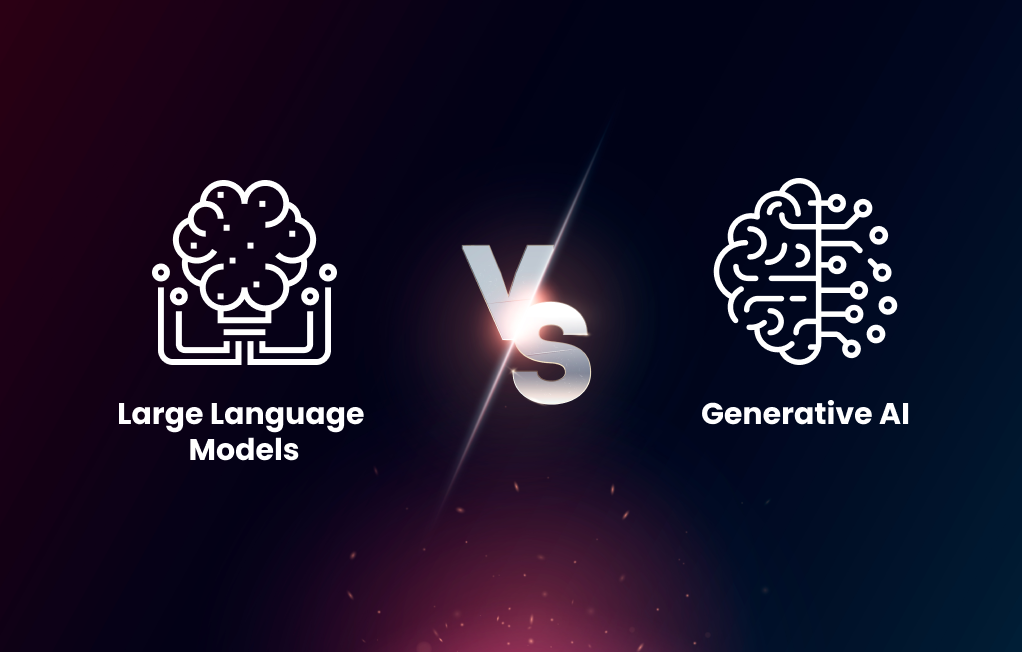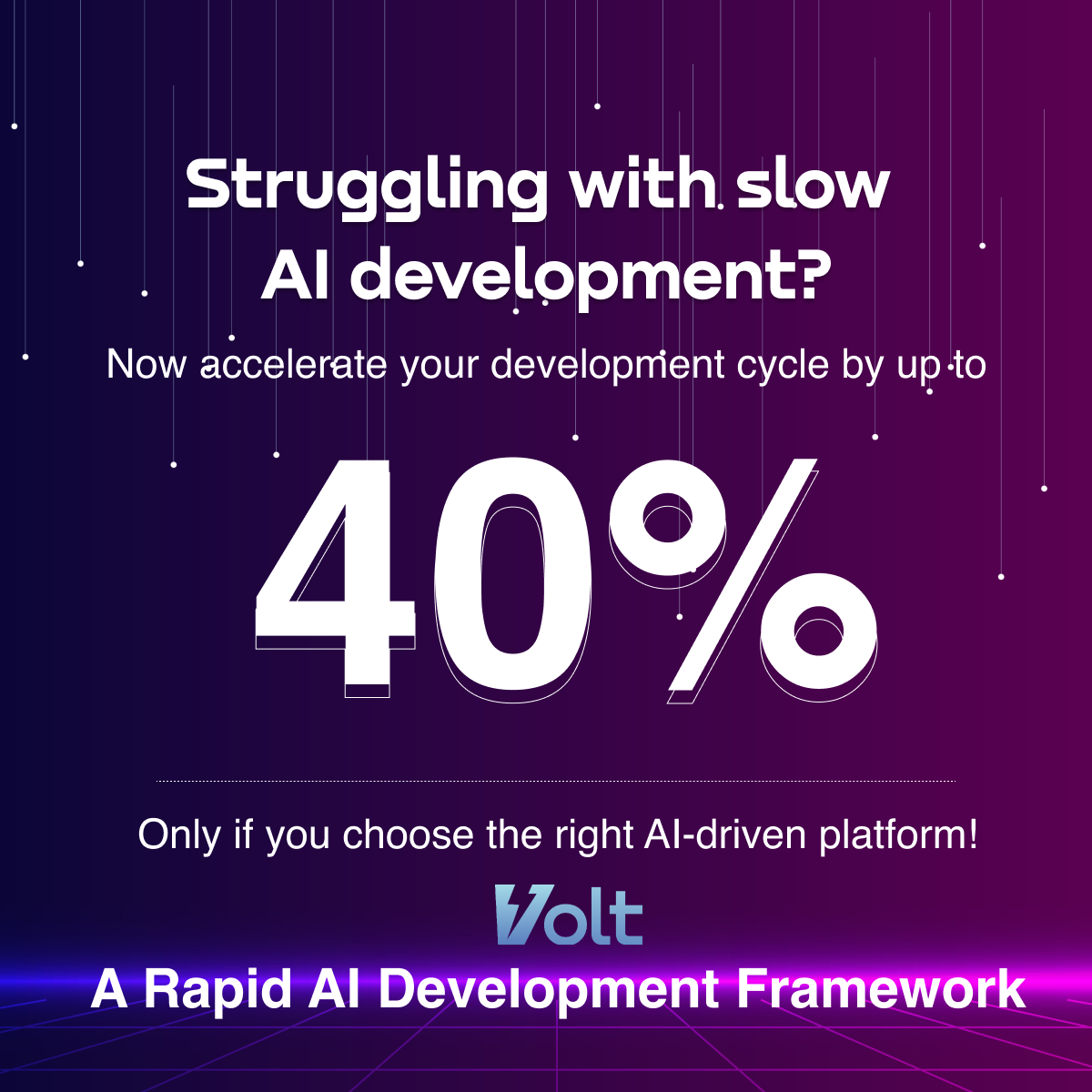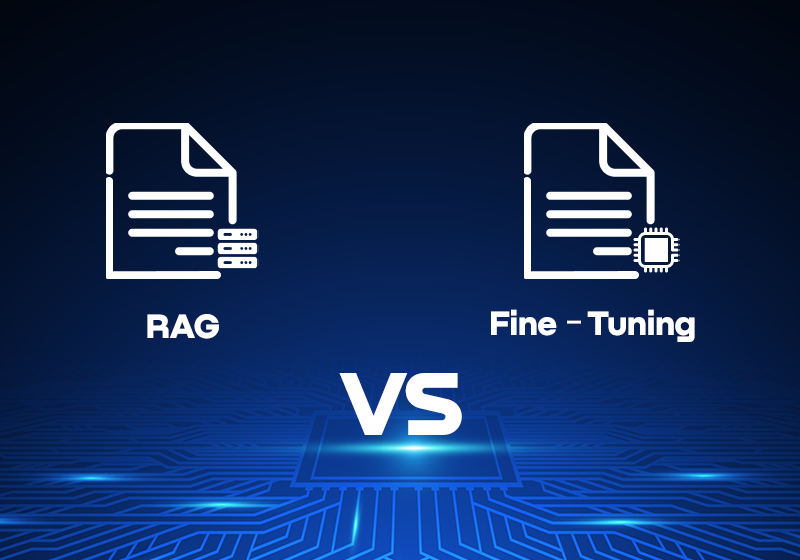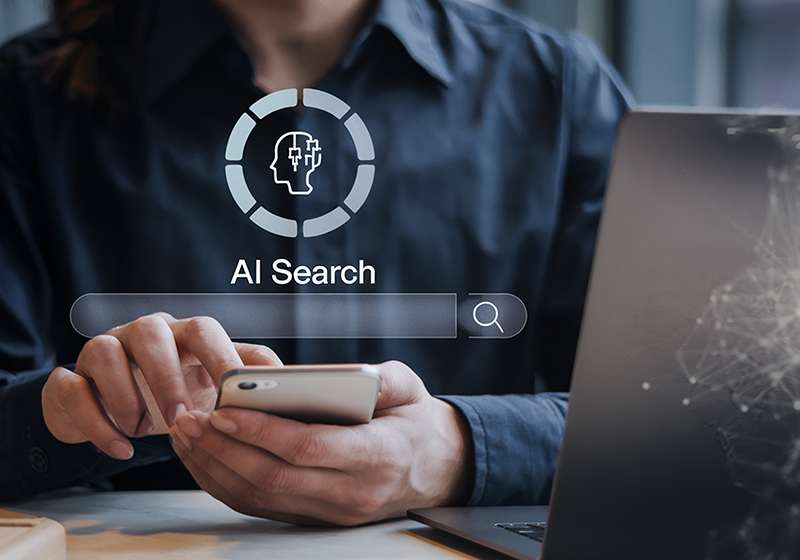AI
Large Language Models (LLM) vs Generative AI: Understanding the Key Differences
 Updated 19 Feb 2025
Updated 19 Feb 2025

The rapid growth of artificial intelligence (AI) has led to numerous subdomains, of which large language models (LLMs) and generative AI represent two substantial components. An analysis reveals that the AI market will achieve $190 billion in revenue, while Natural Language Processing reveals a 27.6% Compound Annual Growth Rate (CAGR). AI-driven technology solutions have experienced quick growth because businesses depend more and more on automation, which delivers better efficiency and improved user experiences.
The LLM development company faces ongoing difficulties, although various organizations are interested in them. The popular Generative AI model ChatGPT from OpenAI functions through machines that occasionally make inaccurate responses, known as AI hallucination during public use. The increasing doubts about AI content reliability have emerged as a result of these events. The implementation of AI-powered solutions by businesses to hire LLM developers requires businesses to understand how Large Language Models differ from Generative AI.
What is a Large Language Model (LLM)?
A Large Language Model (LLM) is an advanced artificial intelligence system trained on vast amounts of text data to understand, generate, and process human language. LLMs use deep learning techniques, particularly transformers, to analyze context, predict words, and perform tasks like answering questions, summarizing text, translating languages, and even coding. Examples include GPT-4, BERT, and LLaMA.
- Functionality: LLMs specialize in NLP tasks such as text generation, translation, summarization, and sentiment analysis. They excel in applications requiring deep language understanding and coherence.
- Technology: Most LLMs are based on transformer architectures, such as OpenAI’s GPT (Generative Pre-trained Transformer) and Google’s BERT (Bidirectional Encoder Representations from Transformers), which use self-attention mechanisms to analyze and generate text.
- Use Cases: LLMs power chatbots, virtual assistants, content creation tools, coding assistants, and even legal and medical documentation automation.
What is Generative AI?
Generative AI (Gen AI) is a powerful artificial intelligence framework designed to create new content, including text, images, audio, and video. Gen AI surpasses standard AI models since it extracts data patterns from extensive information collections to create fresh outputs rather than perform analysis or classification tasks.
- Functionality: Gen AI models create entirely new data rather than simply analyzing or predicting existing patterns. This includes text-based content (chatbots, stories, scripts), images (AI-generated art), music, and even synthetic voices.
- Technology: Gen AI employs models such as Generative Adversarial Networks (GANs), Variational Autoencoders (VAEs), and transformer-based models like DALL·E for image generation and ChatGPT for text generation.
- Use Cases: Gen AI is used in marketing for personalized content creation, in entertainment for AI-driven scriptwriting, in healthcare for drug discovery, and in gaming for designing virtual environments.
Ready to Leverage the Power of LLM?
Contact Q3 Technologies today to discover how LLMs can enhance efficiency and automate workflows in your business.
Key Differences Between LLMs and Gen AI
These systems have standard functionalities, yet each one exists to fulfil separate needs by using distinct methodological approaches. Below are some critical differences between LLM vs Gen AI:
1. Scope of Application
- LLMs: The primary nature of LLMs involves language processing and generation tasks; therefore, they excel at NLP-based applications, including document summaries, translation systems, and chatbots.
- Generative AI: Generative Artificial Intelligence extends its capabilities to produce diverse digital items, starting from digital images and continuing through audio synthesis and video creation.
2. Core Technologies
- LLMs: Transformer models known as GPT and BERT serve as the base for creating LLMs that specialize in producing and interpreting comprehensible text.
- Generative AI: The combination of GANs for image generation and VAEs for realistic simulations, along with transformers for text-based content, makes up Generative AI.
3. Training Data
- LLMs: The training data for LLMs spans the length of large-scale text corpora that embrace books, articles, and internet content, therefore enabling human-like text generation.
- Generative AI: The training data for Generative AI includes diverse collections that determine its output type, whether images, videos, mu, sic, or text.
4. Model Architecture
- LLMs: The self-attention mechanisms found inside transformers help LLMs discover linguistic relations while delivering accurate predictions of textual sequences.
- Generative AI: All types of generative AI systems deduce new data by deploying adversarial networks along with autoencoders or diffusion models to replicate true-world information patterns.
5. Use Cases
- LLMs: The use of LLMs extends to customer service bots, document automation platforms, code completion assistance, and AI research assistant operations.
- Generative AI: Used in digital art, video game character creation, AI-generated music, synthetic voiceovers, and more.
Partner with Q3 Technologies for AI-Driven Innovation!
Explore tailored Gen AI solutions designed to optimize your business operations and drive growth.
Why Choose Q3 Technologies?
Q3 Technologies operates as a distinguished LLM development organization that focuses on creating business-specific AI solutions. Q3 Technologies excels at multiple AI domains through experienced expertise, which provides reliable advanced applications.
Our Expertise in LLM Development
- Custom LLM Development: You can hire LLM developers who develop specific LLMs that optimize business applications, thus enabling both accuracy and efficiency gains.
- Fine-Tuning Pre-Trained Models: The team performs GPT-4 and BERT LLM fine-tuning tasks that match specific industrial demands to boost model performance.
- Seamless AI Integration: Our company integrates LLMs with existing systems, which ensures users easily apply artificial intelligence technologies.
Our Expertise in Gen AI Development
- Diverse Gen AI Solutions: Renowned diverse generative AI solutions include business-enhancing content development with AI together with AI-assisted image and video production tools.
- Industry-Specific Implementations: The generative AI models at our company undergo specialized refinements for specific industries that maximize their operational capabilities within the marketing, healthcare, and entertainment sectors.
- Strategic AI Consulting: Our team delivers strategic advice about implementing AI solutions that will result in peak AI technology utilization.
Why Partner with Q3 Technologies?
- Proven Track Record: Our company has demonstrated success through its extensive expertise in providing AI-based technology solutions to various industrial sectors for numerous years.
- Cutting-Edge Innovation: We maintain a position at the forefront of AI tendencies through the usage of advanced contemporary innovations to deliver solutions optimized for future use.
- Client-Centric Approach: The company tailors AI models according to individual client business needs to maximize operational impact while maintaining efficiency.
Unlock New Possibilities with Gen AI Solutions!
Transform your content creation, marketing, and automation strategies with custom Gen AI development services.
Conclusion
Businesses that want effective AI-powered solutions must realize how Large Language Models differ from Generative AI. The focus LLM development company stays on language-based applications, yet Generative AI operates in creative areas that span different domains. Q3 Technologies provides all-inclusive access to modern state-of-the-art expertise in both fields, which paves the way for innovative, dependable, and scalable AI-driven solutions.
FAQs
What are Large Language Models (LLMs), and how do they work?
LLMs are AI models trained on vast text datasets to generate human-like text. They use transformer architectures like GPT and BERT. These models excel in NLP tasks like chatbots, summarization, and content generation.
How is Generative AI different from Large Language Models?
Generative AI leads the generation of various content elements, starting from texts through images and moving into audio creation, while LLMs concentrate their performance on processing textual information. The technology produces brand-new content instead of working exclusively with language processing. The technology utilizes various models, including GANs, VAEs, and transformers.
What are some real-world applications of Large Language Models?
LLMs enable virtual assistants, chatbots, and content automation tools to function. These systems offer help with code creation and provide both summary documents and emotional analysis of text inputs. Industries like finance, healthcare, and customer service benefit from LLMs.
What are some popular technologies behind Generative AI?
The image generation process in Generative AI follows a method that uses Generative Adversarial Networks (GANs). Variational Autoencoders (VAEs) succeed at producing verified data reproductions. The transformer-based model family includes both DALL·E and ChatGPT for producing text as well as visuals.
What are the main differences between LLMs and Generative AI?
The goal of LLMs is to execute natural language processing operations such as text finishing and language interpretation. AI generation technologies advance beyond text to create images as well as music and digital videos. The network structures between LLMs and Generative AI differ in that LLMs employ transformers, and Generative AI uses GANs and VAEs.
How can businesses benefit from integrating LLMs into their operations?
LLMs automate workflows in customer service, content creation, and data analysis. They improve efficiency by generating quick, accurate responses. Businesses can enhance productivity while reducing operational costs.
What industries benefit the most from Generative AI?
Marketing uses Generative AI for personalized content creation. The entertainment industry leverages it for AI-driven scriptwriting and digital art. Healthcare applies it to drug discovery and medical imaging.
Why should businesses choose Q3 Technologies for LLM and Generative AI solutions?
Q3 Technologies provides customized AI solutions for various industries. They specialize in LLM development, fine-tuning, and seamless AI integration. Their expertise ensures businesses get optimized, reliable AI models.
What factors should businesses consider when implementing AI solutions?
Companies should assess scalability, data security, and model accuracy. Understanding the AI’s impact on business processes is crucial. Partnering with experienced AI providers like Q3 Technologies ensures successful implementation.
How does Q3 Technologies ensure AI models are optimized for business needs?
Q3 Technologies fine-tunes pre-trained models for specific industries. They integrate AI seamlessly into existing workflows for maximum efficiency. Their strategic AI consulting ensures businesses achieve their desired outcomes.




